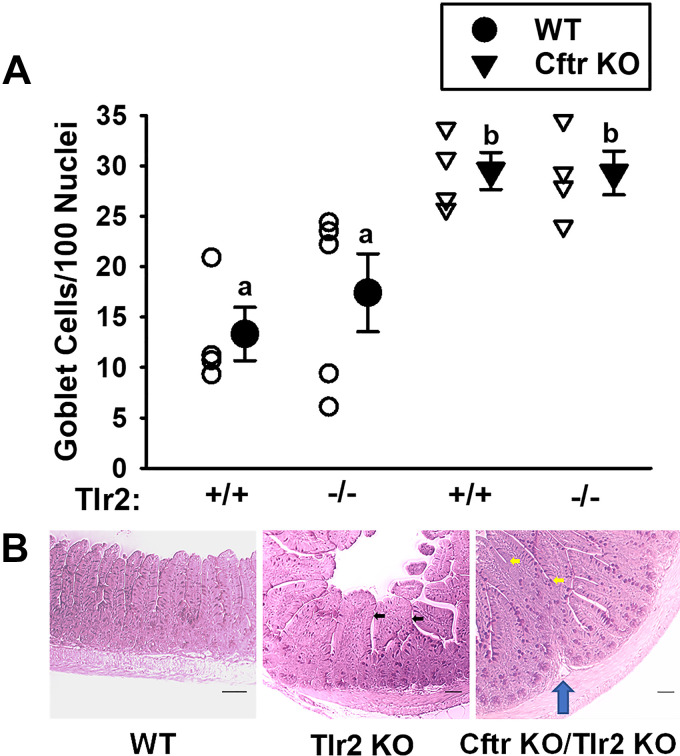Figure 4.
Goblet cell number and morphological changes in ileum from WT, Cftr KO, and Tlr2 KO crossbred mice. A: goblet cell counts/100 nuclei in villous epithelium of PAS-stained sections of ileum from WT/Tlr2+/+, WT/Tlr2−/−, Cftr KO/Tlr2+/+, and Cftr KO/Tlr2−/−, and WT/Tlr2−/− vs. individual data points shown. a,bMeans with the same letter are not significantly different by one-way ANOVA and Holm–Sidak pairwise comparisons. P = 0.004; WT/Tlr2+/+ vs. Cftr KO/Tlr2+/+, P = 0.014; WT/Tlr2+/+ vs. Cftr KO/Tlr2−/−, P = 0.014; WT/Tlr−/− vs. Cftr KO/Tlr2+/+, P = 0.044; WT/Tlr2−/− vs. Cftr KO/Tlr2−/−, P = 0.038; n = 4 WT/Tlr2+/+ (1 male, 3 females), 5 WT/Tlr2−/− (3 males, 2 females), 4 Cftr KO/Tlr2+/+ (1 male, 3 females), and 3 Cftr KO/Tlr4−/− mice (2 males, 1 female). B: photomicrographs of PAS-stained ileum from WT (left), Tlr2 KO (middle), and Cftr KO/Tlr2 KO (right) mice. Black arrows, widened villi. Yellow arrows, villus fusion. Blue arrow, lamina propria upfolding. Scale bars = 50 µm. KO, knockout; PAS, periodic acid-Schiff; Tlr, Toll-like receptor; WT, wild-type.

